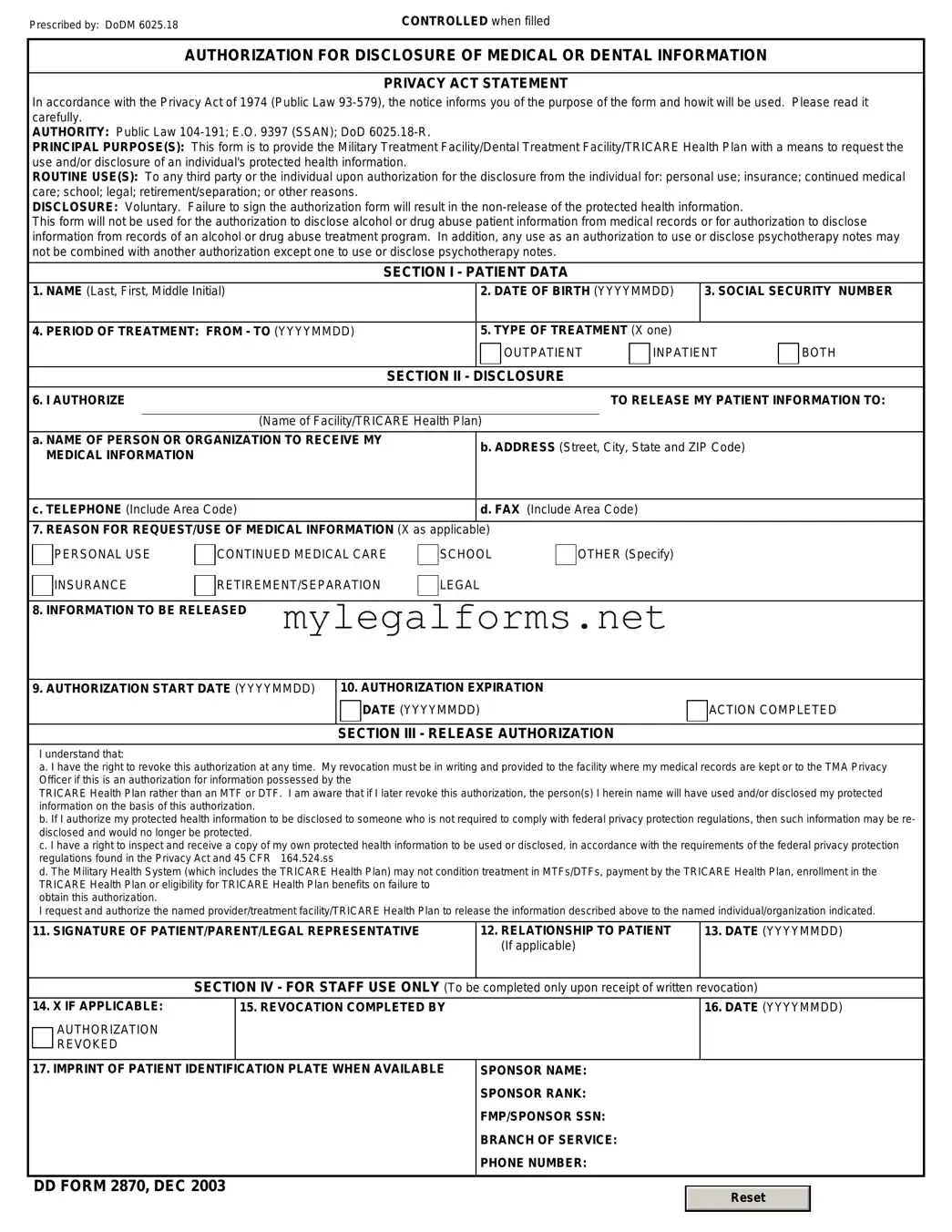The DD 2870 form, also known as the "Authorization for Disclosure of Medical or Dental Information," is crucial for service members and their families when seeking medical care. However, errors during the completion of this form can lead to delays or denials of services. Understanding common mistakes can help ensure that the form is filled out correctly.
One frequent mistake is incomplete information. Individuals often neglect to fill in all required fields, such as personal identification details or specific medical information. Omitting these details can result in processing delays, as the reviewing authority may need to request the missing information before proceeding.
Another common error involves incorrect signatures. Signatures must match the name provided on the form. If a spouse or other family member signs on behalf of the service member without proper authorization, it may invalidate the form. Ensuring that the correct individual signs is essential for the form's acceptance.
Many people also overlook the date on the form. Failing to date the authorization can lead to questions about the form's validity. Proper dating helps clarify the timeline of consent and ensures that the authorization remains relevant.
In addition, individuals sometimes select the wrong purpose for the disclosure. The form allows for various purposes, such as treatment or legal proceedings. Choosing the incorrect purpose can complicate the process, as the reviewing authority may not understand the context of the request.
Some applicants fail to review the privacy notice included with the form. This notice outlines how the information will be used and shared. Ignoring this section can lead to misunderstandings regarding privacy rights and the extent of information sharing.
Another mistake involves not providing contact information for the individual or organization requesting the disclosure. Without this information, the healthcare provider may struggle to fulfill the request efficiently. Including accurate contact details is vital for a smooth communication process.
Additionally, individuals may not keep a copy of the completed form for their records. Retaining a copy can be invaluable for future reference, especially if questions arise regarding the authorization or if the form needs to be resubmitted.
Lastly, individuals sometimes submit the form to the wrong office. Each military branch has specific protocols for handling medical information requests. Ensuring that the form is sent to the correct office can prevent unnecessary delays in processing.
By being aware of these common mistakes, individuals can improve their chances of successfully completing the DD 2870 form and receiving the medical care they need without unnecessary complications.

